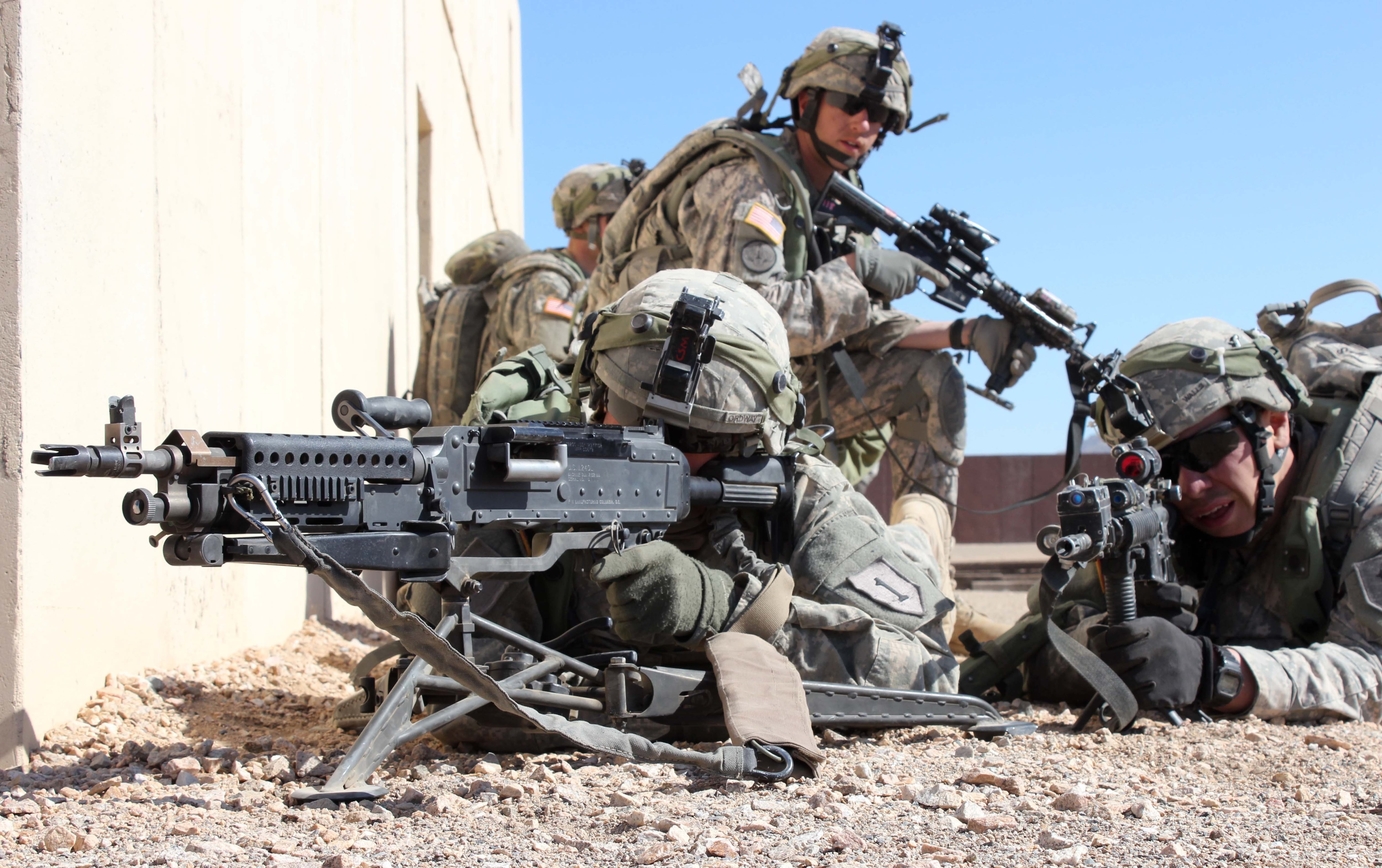As the Army continues to develop a potential replacement for the M4, for a handful of senators, replacing the carbine and 5.56 mm round with a new bullet and better rifle is a no brainer.
During a Senate Armed Services Committee subcommittee hearing this week, members heard testimony from two retired Army generals who have been staunch advocates for getting a new rifle into the hands of at least infantry and special operations troops.
Sen. Angus King, I-Maine, asked retired Maj. Gen. Robert Scales if the M4 with the 5.56 mm round can pierce new Russian body armor.
Scales replied that it does not.
"Isn't that the end of the discussion?" King said. "We've got to have a new weapon."
But changing the standard rifle issued to all service members in all branches isn't so easy.
Sen. Joni Ernst, a Republican from Iowa and retired Army lieutenant colonel, requested the hearing, which took place Wednesday. She has been a vocal proponent for changing the rifle, raising the issue with retired Marine Gen. Jim Mattis during his confirmation hearing to become secretary of defense.
"There is an immediate need here," Ernst said.
And she ended the hearing by emphasizing she and others on the committee will see the project through to its "fruition."
In fact, subcommittee chairman Sen. Tom Cotton, R-Ark., asked that simple question of the retired two-star.
"Why is this so hard?" said Cotton, a former Army infantry officer who served in Iraq and Afghanistan.
He also pointed out that a rifle is not a missile system, an aircraft carrier or a new supersonic jet.
Scales said the acquisition system being used by the Defense Department is what's preventing progress. The same system used to develop stealth bombers is being used to replace a 7-pound rifle, he said.
Though the title of the hearing was "Small Arms Reform," most of the hour-long conversation centered around the individual assault rifle.
But Scales, along with retired Lt. Gen. John Bednarek, made it clear to the senators that even though they believe a new rifle and round combination is necessary across the board, the priority should be for those who do the "nasty business" of closing with and killing the enemy – infantry, special operations and those personnel who work directly with them.
One hurdle, the generals said, is "pure fleeting," a standard that all troops at all levels, whether payroll clerks or infantrymen, be issued the same weapon in the same caliber.
The senators seemed to agree, noting the different functions of each job and the necessity for different capabilities within small arms.
Bednarek did note that a new rifle should also be fielded with the same infantry and ground combat units in the National Guard and Reserve, so that if called upon, they would be trained and ready with the same capability.
Finding an intermediate caliber rifle to replace the M16 and M4 would increase range, lethality and accuracy without adding significant weight to the individual soldier or Marine, both generals said.
The pressing issue is that adversaries have greater range with their weapons, which are usually in the 7 mm family. In addition, recent intelligence shows Russian body armor that can withstand a 5.56 mm bullet.
The Army’s Maneuver Center of Excellence at Fort Benning, Georgia, recently told Military Times that it is looking at half a dozen variants of rounds in the 6.5 mm range, and that the new weapon system it is developing will not be an M16/M4-type of assault rifle.
But prototypes might not be available until 2020 or later.
Scales said one of the problems with defense acquisition is the long timelines. Five to seven years to develop a new rifle is unacceptable, he said. Scales said the job could be done in a year or two with a competition or even looking at commercial-off-the-shelf options.
King specifically asked Scales if there was an available rifle/round combination that could be purchased off the shelf. He said there was, adding that the Marines are in the process of purchasing the Heckler and Koch 417 or the M27 in 5.56 mm, and the Army is purchasing the same rifle in the 7.62 mm variant for squad designated marksmen.
The rifle could be chambered for a 6.5 mm family round without too much modification, Scales said. The magazine can already accommodate either 5.56 mm or 6.5 mm ammunition.
Todd South has written about crime, courts, government and the military for multiple publications since 2004 and was named a 2014 Pulitzer finalist for a co-written project on witness intimidation. Todd is a Marine veteran of the Iraq War.




